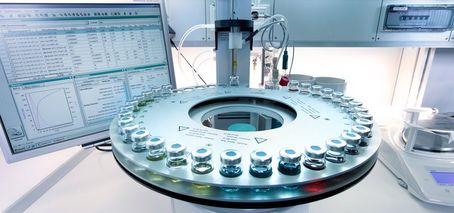Oil grade picture getting increasingly complicated
The headaches surrounding oil grades are set to increase for automotive professionals over the coming years, a leading lubricant expert has warned.
The number of different engine oils on the market has soared in the last decade.
Whereas once most cars required a basic 15W-40 viscosity oil or a 10W-40, there is now a much wider range available depending on OEM and vehicle.
Leading lubricant manufacturer FUCHS Lubricants now has circa 30 core engine oils. Ford alone now has four main oil specs.
“It’s horribly complicated,” said FUCHS’ UK Automotive Technical Manager, Andy Brown. “In the aftermarket, you could need to stock in the region of 17 different grades to cover a wide selection of vehicles.
“Unfortunately, it’s only going to get worse, particularly with hybrids and EVs playing an ever-increasing role in the automotive market.
“Ultimately, it’s all about emissions and fuel economy. OEMs have been hit with stringent emission targets and the oil can play a significant role in helping them achieve that.
“At the most basic level, it’s about hydrodynamic lubrication. Thinner oils result in less friction and, therefore, less energy being used.
“That’s why we’ve seen 0W-16 enter the market. 0W-12 and 0W-8 will come. I’d expect to see 0W-12 this year or next from one of the major OEMs.
“Oil should be considered a critical component. You wouldn’t use the wrong tyres, and you shouldn’t use the wrong oil either.”
Andy said that the situation is further complicated by the fact that there is much more to an engine oil than its viscosity.
Two 5W-30 oils, for example, could be quite different in their make-up due to the additives added to them to deal with the specific needs of individual OEM’s components, particularly the piston rings and the upper cylinder areas.
Andy outlined the different lubrication considerations which are at play when it comes to hybrid and EV vehicles.
“EV vehicles are typically factory fill and sealed for life, so there is little or no aftermarket for those,” he said.
“Hybrids are slightly different because the engine isn’t always running. The engine will cool down when running on the battery, so the oil needs to be able to cope with those stresses.
“Some existing products are hybrid compatible, but others will need to be adapted to suit the unique demands of hybrid systems and for some there will be brand new technology.”
Furthermore, Andy said he expected new ACEA specifications to be announced this year, with A5, B5 and C5 specs being axed and new ones brought in, mainly to address LSPI issues found in turbocharged gasoline engines.
All of this amounts to a severe headache for motor factors and professional motor mechanics as they seek to stock the products their customers want and need.
Andy said: “We appreciate that oil can be daunting these days – and the cost of getting it wrong can be severe.
“But there are a few simple things people can do to ensure that they use the right oil. Firstly, consult the handbook and check the requirements carefully.
“Secondly, use an online oil checker system to find the right products just from a number plate.
“Thirdly, speak to an expert. Our customer service team is happy to advise either on the telephone or by email.
“For the aftermarket, we run education courses to help people understand how to use oil properly, and we are also supplying smaller, 20L Lube Cube packs instead of the once commonplace 205L barrels so that they can stock a wider range of products.”


